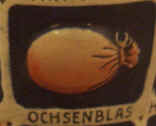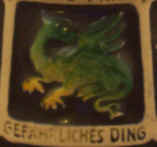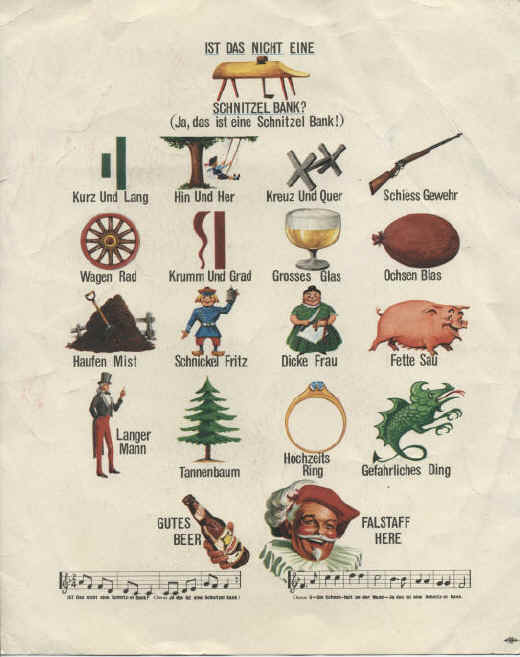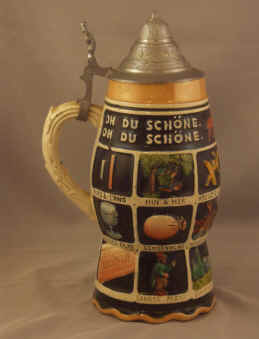 |
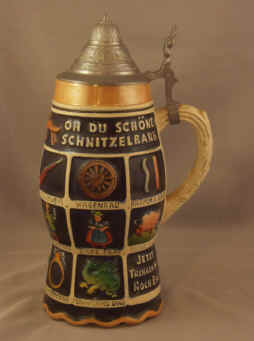 |
One of the first questions that
comes up is “Is it really a German song?” It doesn't do any good to ask
a German, because they usually won't know or will give a wrong answer.
The answer is yes. The first published version was printed about 1830
in Karlsruhe and various later versions were also printed in Germany.
Then and now the song and its many variants and cousins seem based in
the southwestern-most part of Germany and across the border into
Switzerland. Today these are mostly thought of as either a children's
song or adult Carnival songs depending upon the version. But the
Schnitzelbank did not stay there, it came to America with German
immigrants in the mid-19th century. Two places where the song
particularly took hold were among the Pennsylvania Dutch and the large
German community in Buffalo, New York.
 Around 1893, Lizzie Wilson, a singer and comedienne from
Buffalo first sang the Schnitzelbank song at Tony Pastor's in New York
City, the original home of Vaudeville. She became known as “the
Schnitzelbank Girl” and performed her German act around the country for
years, even returning for old timer
nights in the 1930's. Meanwhile the song became popular, other
vaudeville performers including the Marx brothers and Alfonse and
Gaston performed it. Various versions were published and recorded on
all sorts of media, including piano rolls, Edison cylinders, and many
78's. After Prohibition, the charts were used as advertising by
breweries and German
restaurants (see example below). The song is popular to this day at
German heritage events and Oktoberfests throughout the US and Canada. Around 1893, Lizzie Wilson, a singer and comedienne from
Buffalo first sang the Schnitzelbank song at Tony Pastor's in New York
City, the original home of Vaudeville. She became known as “the
Schnitzelbank Girl” and performed her German act around the country for
years, even returning for old timer
nights in the 1930's. Meanwhile the song became popular, other
vaudeville performers including the Marx brothers and Alfonse and
Gaston performed it. Various versions were published and recorded on
all sorts of media, including piano rolls, Edison cylinders, and many
78's. After Prohibition, the charts were used as advertising by
breweries and German
restaurants (see example below). The song is popular to this day at
German heritage events and Oktoberfests throughout the US and Canada.
|
| Another common question is “Just what is a
Schnitzelbank anyway?” Again, it doesn't do any good to ask a German
because they usually won't know or will give a wrong answer. The
problem is that the correct English translation is a “Shaving horse”
and if you ask an American what a shaving horse is most of them won't
know either. But, when the song was becoming popular many people had
one in their barn. The schnitzelbank is a very handy, easy to construct
and use woodworking device that combines a place to sit with a foot
operated vise. It is especially good for making and repairing barrel
staves. You can see them being used today by woodworkers at heritage
festivals and historic villages around the country. |
The other questions are usually about what the items are in the song.
Well, the items are each depicted in a picture on the singing chart, or
on the stein in this case. So what you see is what the words are. A few
can use further explanation. An Ochsenblas is depicted as an ox
bladder (balloon), but it actually means ox blast, or flatulence. A “Schnickelfritz”
is 19th century slang meaning roughly “little rascal”. The Tannenbaum
is a fir tree, not specifically a Christmas tree. The “Gefaehrliches
Ding” depicted by a dragon is a “dangerous thing”.
If you have not seen the Schnitzelbank performed you should try to do
so. There is a leader who sings and points to the items on the chart,
while everyone else sings along as best they can. It is best
appreciated with lots of beer; but, kids like it too. If you have a
Schnitzelbank stein, you can sing along without being near enough to
read the chart!
|


 Around 1893, Lizzie Wilson, a singer and comedienne from
Buffalo first sang the Schnitzelbank song at Tony Pastor's in New York
City, the original home of Vaudeville. She became known as “the
Schnitzelbank Girl” and performed her German act around the country for
years, even returning for old timer
nights in the 1930's. Meanwhile the song became popular, other
vaudeville performers including the Marx brothers and Alfonse and
Gaston performed it. Various versions were published and recorded on
all sorts of media, including piano rolls, Edison cylinders, and many
78's. After Prohibition, the charts were used as advertising by
breweries and German
restaurants (see example below). The song is popular to this day at
German heritage events and Oktoberfests throughout the US and Canada.
Around 1893, Lizzie Wilson, a singer and comedienne from
Buffalo first sang the Schnitzelbank song at Tony Pastor's in New York
City, the original home of Vaudeville. She became known as “the
Schnitzelbank Girl” and performed her German act around the country for
years, even returning for old timer
nights in the 1930's. Meanwhile the song became popular, other
vaudeville performers including the Marx brothers and Alfonse and
Gaston performed it. Various versions were published and recorded on
all sorts of media, including piano rolls, Edison cylinders, and many
78's. After Prohibition, the charts were used as advertising by
breweries and German
restaurants (see example below). The song is popular to this day at
German heritage events and Oktoberfests throughout the US and Canada.
